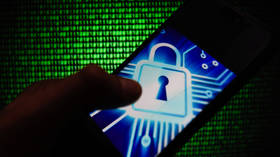New DARPA prosthetic hand grants ‘near-natural’ sense of touch

A new prosthetic hand which connects directly to the brain has been created by American scientists, providing a “near-natural” sense of touch. The developers claim their new invention could revolutionize the lives of people with missing or paralyzed limbs.
The prosthetic hand developed by scientists at the Defense Advanced Research Projects Agency (DARPA) could not only ‘feel’ things being touched but the scientists could also control the artificial limb with thoughts, the creators of the new device said in a press-release.
The invention is set to become the world’s first prosthesis to be controlled directly via the brain as well as one of the few that could deliver tactile feedback.
Bionic breakthrough: Mind-controlled prosthetic leg can read thoughts, subconscious intentions http://t.co/sOavElUwGLpic.twitter.com/jQeCrH1D1w
— RT (@RT_com) May 21, 2015The DARPA’s prosthesis control system consists of two chips embedded in the wearer’s brain, connecting it to the set of pressure-sensitive torque motors placed in the artificial hand, Engadget reports.
The chips, which are only 1mm wide, contain several electrodes and are placed in the person’s motor cortex (the part of the brain controlling arm and hand movements), and sensory cortex (the brain area that receives and identifies signals resulting from different tactile sensations).
As a result, every time the prosthetic hand touches something, the sensors send electrical signals via wires to the chips in the brain making the wearer feel near-natural contact.
The device, however, cannot sense temperature along with some other characteristics of the object, as the sensors do not cover the total surface of the artificial hand.
Apart from just being cool, these MIND-CONTROLLED BIONIC HANDS are less risky than donor ones http://t.co/MeSno9DrNXpic.twitter.com/SIIHjZvHOn
— RT (@RT_com) February 25, 2015The DARPA prosthetic hand developed by researchers at the Applied Physics Laboratory at Johns Hopkins University was tested on an unnamed volunteer, 28, who sustained a spinal cord injury and was paralyzed for about a decade.
The scientists wired the prosthesis to his brain and blindfolded him. Then they pressed different fingers of the artificial hand to find out if the volunteer could sense anything.
The test subject reported feeling “as if his own hand were being touched” and showed almost 100 percent accuracy in his responses during the blindfolded touch tests.
“At one point, instead of pressing one finger, the team decided to press two of them without telling him. He responded in jest asking whether somebody was trying to play a trick on him. That is when we knew that the feelings he was perceiving through the robotic hand were near-natural,” said DARPA program manager Justin Sanchez.
#DARPA wants to develop prosthetic arms that let vets ‘play catch’ with their kids again http://t.co/tK7pPSpG5Mpic.twitter.com/3uXb00H68N
— RT America (@RT_America) February 11, 2015“We've completed the circuit. Prosthetic limbs that can be controlled by thoughts are showing great promise, but without feedback from signals traveling back to the brain it can be difficult to achieve the level of control needed to perform precise movements. By wiring a sense of touch from a mechanical hand directly into the brain, this work shows the potential for seamless bio-technological restoration of near-natural function,” he added.
The new technology was presented at Wait, What? A Future Technology Forum on September 10 and described in a DARPA press-release the next day. The invention has yet to be peer reviewed.
The new prosthesis is not the first creation presented by the DARPA’s Revolutionizing Prosthetics program, which has been developing muscle-controlled artificial limbs since 2006. In 2013, the scientists from the program presented an artificial arm that allowed its user to grab things and move the hand. In 2014, another project sponsored by DARPA, the DEKA Arm system, produced an artificial arm that allowed wearers to control it via signals from electrodes implanted in their muscles.
Double amputee manages prosthetic arms by intuitive thought (VIDEO) http://t.co/jDhp0Jp057pic.twitter.com/9HOa0bzxdv
— RT (@RT_com) December 20, 2014These prostheses were capable of performing complex tasks but neither of them could send tactile feedback to the user. Currently, DARPA is also funding a project aimed at creating a brain-controlled prosthesis at the University of Pittsburgh.
Several other companies around the world are also working on sophisticated prosthetics.
In June, a group of Austrian researchers led by Professor Hubert Egger, from the University of Linz, created a “feeling” prosthetic leg that functioned by wiring the sensors in the artificial limb to the to the remaining nerve endings in a patient’s stump, which were in turn rewired to healthy tissue in the patient’s thigh.
World’s 1st 'feeling' prosthetic leg unveiled in Austria http://t.co/hgcLcVqu2qpic.twitter.com/aPOc6nxe3c
— RT (@RT_com) June 9, 2015Another “feeling” artificial limb was created by a Swiss scientist, Dr Silvestro Micera and his colleagues at the Swiss federal Institute of Technology along with the The Sant'Anna School of Advanced Studies in Italy.
READ MORE: Touching breakthrough: Bionic hand to return sense of feeling
The volunteer wearing the hand prosthesis developed by Dr Micera could distinguish between hard, soft, round and square objects during blindfolded touch tests, although the device was not controlled directly by the brain.












